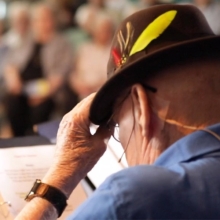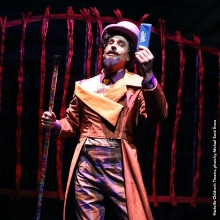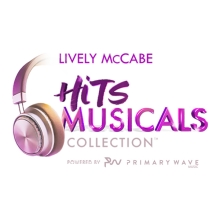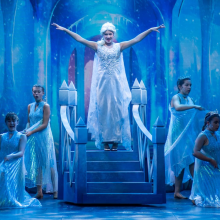Show History
History
Inspiration
Seussical is an amalgamation of stories by Theodore Seuss Geisel (AKA Dr. Seuss). His 46 children's book are staples in the world of American children's literature and the cultural impact of these stories has been profound since he began writing in the 1930s. Prior to Seussical, Dr. Seuss work had been adapted for both television and film, in some cases by Geisel himself. Seussical is primarily based on the Dr. Seuss stories, "Horton Hears a Who," "Horton Hatches an Egg" and "The One-Feathered Tail of Gertrude McFuzz," although it incorporates many references to other Dr. Seuss stories.
Productions
After shaky beginnings, Stephen Flaherty and Lynn Ahrens' Seussical began its journey with a two-week reading of the show in New York. This reading was followed by a month-long workshop in Toronto in the summer of 1999. At that initial workshop, there were no costumes or scenery and only minimal props. Yet, the effect was magical. As Ahrens wrote "The strength of the workshop was its simplicity, its rough-around-the-edges charm, its intimacy." The invited audiences loved the presentation, and Seussical was immediately dubbed Broadway's "next big hit."
But, some complications happened on the way to New York, and by the time the show opened on Broadway in 2000, it had been turned into a big, splashy production that was quite different from what had worked so well in the initial workshop. The show played at the Richard Rodgers Theater for six months, where audiences loved it. Ultimately, however, Seussical did not realize its potential, primarily because it was not the show the authors had envisioned. When the show closed on May 20, 2001, it was an emotional night for the actors and writers who believed so strongly in the essential material.
When producer, Ken Gentry, decided to produce a national tour, the authors welcomed the opportunity to revisit their work. They made small changes in the book and score, allowing Jojo to become more of a force in the storytelling. Most importantly, they sought to pare down the physical aspects of the production, advocating a "less is more" approach. The reviews for that tour were overwhelmingly positive. A second national tour was launched in 2003, bringing the joys of Seussical to an even wider audience.
When the amateur rights to the show were released in 2004, hundreds of schools and community theatres jumped at the chance to produce it.
Cultural Influence
- A big, splashy Broadway production was not the right context for Seussical The Musical. When the authors retooled the show for the National Tour to make a more pared down, easier to produce version, it was a success. Inspired by this tailoring of the show, two additional versions of Seussical, Seussical JR. and Seussical TYA, specifically for young audiences and performers were created from the original.
- Seussical ranks among the top-three most licensed properties in MTI's catalog, with three versions now available.
- Despite its short Broadway run, Seussical earned a lot of attention as the first Broadway show following Flaherty and Ahrens success with Ragtime. It was featured in the Macy's Thanksgiving Day Parade and the cast featured celebrity replacements such as Rosie O'Donnell and teen singing sensation, Aaron Carter.
Trivia
- Ahrens and Flaherty were invited to write Seussical immediately after their show, Ragtime, had a triumphant opening on Broadway. The producer of that show, Garth Drabinsky, had secured the musical rights to Dr. Seuss' most famous stories. But, before the authors had even finished their first draft, Livent, Drabinsky's production company, was unexpectedly plunged into bankruptcy.




